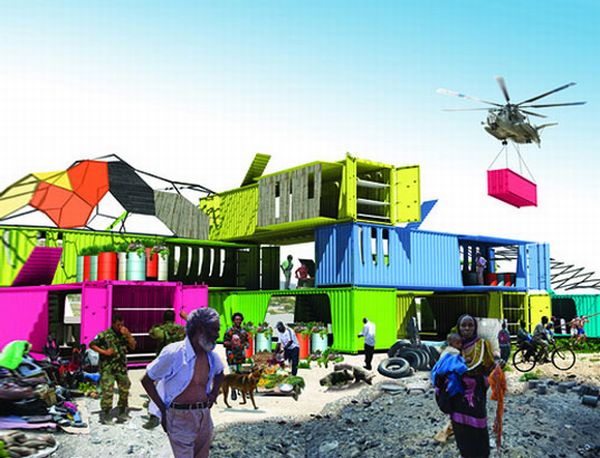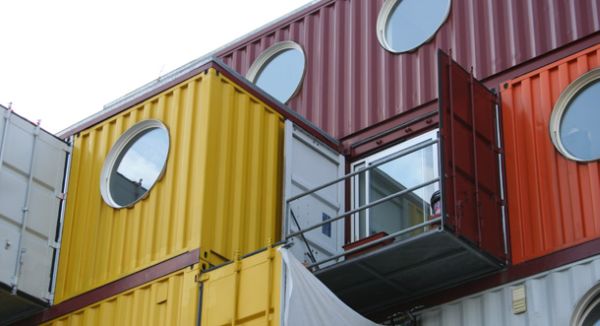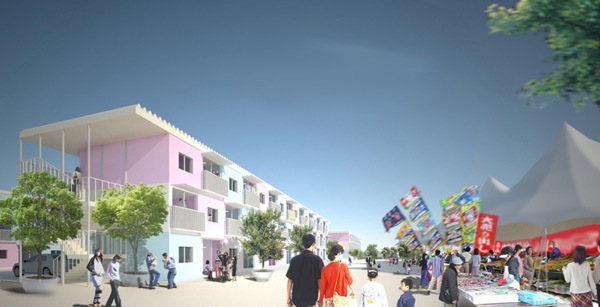
We frequently come across news about the natural disasters taking place all around the globe that leave hundreds and thousands of victims homeless. Owing to the same reason, there arises the need for the disaster relief shelters. Though people are now taking measures to save the environment and cause no further harm to our planet, they are also suffering with the myriad devastating aftermaths caused by the frequently occurring natural disasters like tsunamis, floods and earthquakes. Hundreds and thousands of victims are left homeless after these catastrophes. Designers and architects from across the world are coming up with innovative ideas of disaster relief shelters, which are tough and more practical than just ordinary tents. Moreover, the architects nowadays are also considering sustainability for the emergency shelter designs, so that they have a low impact on the environment. Given below are five of the promising disaster relief shelters.
Disaster relief shelter from Clemson University
A team of researchers at Clemson University came up with the SEED project, which aimed to design temporary dwellings from shipping containers. The project was conceived for victims of storms and hurricanes in the Caribbean Islands as well as the United States. But this project was implemented for the unfortunates of Haiti earthquake who were left roofless in the devastation. A galore of shipping containers languishes in ports all over the world. These were utilized in the project to provide impermanent apartments for the sufferers. Moreover, the shipping containers are strong enough to withstand seismic activities and hurricane storms. These shelters had holes drilled at the sides to provide fresh air and light and the exteriors would be covered in ceramic paints. Wooden shipping pallets were used for bathing and cooking areas whereas, large discarded tires were transformed to beds. Along with the container, the suffering family would also receive a 55 gallon drum for planting food. This temporary shelter provided a space of 310 square feet, which was quite enough for a family to live comfortably.
Shipping container shelter from PFNC
Shipping containers are used to carry various kinds of cargo and once this work is done they lie abandoned on ports. But now, these shipping containers are being utilized by architects and designers, who are repurposing these shipping containers as temporary disaster relief homes. Some are also making use of these discarded containers to build their houses in budget. The dwellings made of these discarded shipping containers carry the advantages of being tough, durable, fireproof and immune to termites and even rust. Much of the recycled material is used in constructing a house by utilising the shipping containers. Therefore the cost of construction is also reduced and a far less time is required for the construction process. These shelters are expedient during the times of natural catastrophes. They can be easily transported to the areas where the calamity has occurred and can provide temporary shelters to the affected people. The PFNC (abbreviation for Por Fin Nuestra Casa in Spanish meaning Finally, a Home of Our Own) global community, is employing this construction scheme to construct housing for masses living in disaster prone regions or insufficient housing situations. They will manufacture the houses that will be priced for less than $10,000.
Disaster relief shelter by Architecture for Humanity
Architecture for humanity, founded in 1999 is a registered, non profit organization, which aims to help those suffering during any sort of crises. The establishment also gives a favourable chance to many of the architects and designers from all over the world to show their expertise and create innovative and sustainable designs for needy and homeless of the devastation. The organisation stepped forward to help the miserable people who suffered from the March 2011 Tsunami in Japan. Yasutaka Yoshimura Architects were called upon to create seaside cottages for the homeless people. These cottages were made from shipping containers, stacked one box atop the other. These were prefabricated in Thailand at then shipped to Japan to be assembled on site. Each of the containers was spacious with an entire glass wall, which provided natural light. It had a living area and a bedroom under which there was a spacious bathroom.
Container City by Richardâs Architecture + Design.
Richard Moreta, owner of Richardâs Architecture + Design and the principal of GMZ Design, proposed the âContainer Citiesâ project that was approved for Haiti disaster relief. The projected aimed to construct modular dwellings by making use of discarded shipping containers. The âContainer Citiesâ could be assembled easily, were simple and very cheap. This container project made use of steel frame system with rubber rollers so that the containers could stack easily over one another. The containers are lightweight but were strong enough to withstand earthquakes. Natural ventilation, daylight, rainwater were implemented to make it a zero energy project while, power was generated by using solar panels, wind turbines etc. this project could either be altered and used as a permanent housing or could be dissembled to move to some other location.
Shigeru Ban Architect delivers relief in Japan
As the tsunami struck Japan this year, numerous architects and designers gathered from all over to provide necessary aid soothing the homeless to recover from the destruction. Shigeru Ban Architects was one of the team of architects that deals in Disaster Relief Projects. The architectural team chose waste shipping containers to form base of the relief houses as these accommodations were spacious, were easier as well as quicker to construct and could make out a three story high structure in a narrow space. Each unit comprised of a living areas, private bed rooms and bathrooms. The open spaces between the containers were left for kitchen and dining purposes that were covered by window walls.




